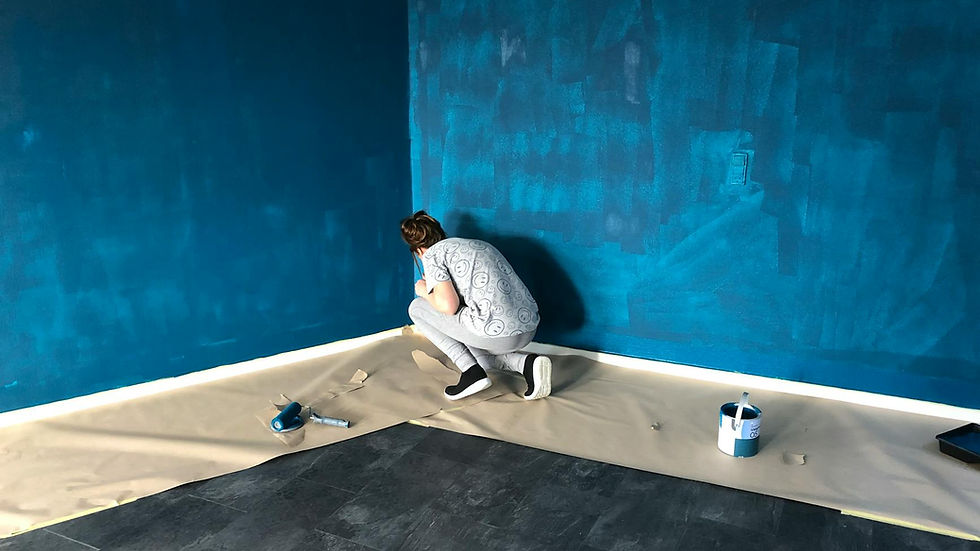Concrete: When Can You Walk On It? | Homeowner's Guide
- Riley Thorne

- 1 day ago
- 4 min read

Have you ever watched concrete being poured on your property and then found yourself impatiently waiting to use it? The anticipation of a new patio, driveway, or walkway can be excruciating, especially when you're unsure when it's safe to step foot on your new concrete surface. Understanding the curing process and the factors that influence it are crucial to prevent damage and ensure the longevity of your investment. This complete guide for homeowners will break down everything you need to know about walking on freshly poured concrete.
The Curing Process: More Than Just Drying
Concrete doesn't simply "dry;" it undergoes a chemical process called hydration. This is a reaction between the cement, water, and other components in the mix that results in a hardened material. This process takes time, and rushing it can have detrimental effects on the concrete's strength and durability.
Initial Set vs. Full Cure
It’s important to distinguish between the initial set and the full cure. The initial set is when the concrete becomes firm enough to hold its shape, usually within a few hours. However, the concrete hasn't reached its full strength yet. The full cure, which can take up to 28 days, is when the concrete reaches its maximum designed strength.
Concrete: When to walk on it?
So, the burning question: when can you walk on concrete? The answer isn't a simple one, as it depends on several factors. However, a general guideline applies.
Light Foot Traffic (24-48 Hours)
Typically, you can walk lightly on concrete after 24 to 48 hours. "Lightly" means avoiding heavy boots, sharp objects, or concentrated weight in one area. Stepping gingerly and distributing your weight evenly is key. Think of it like walking on thin ice.
Heavier Traffic (3-7 Days)
For heavier traffic, such as using a wheelbarrow or allowing pets to walk on the surface, it's best to wait at least 3 to 7 days. Again, this is a general guideline, and other factors can influence the timeframe.
Driving on New Concrete (7+ Days)
Driving vehicles on new concrete requires significantly more curing time. A minimum of 7 days is generally recommended, but ideally, you should wait longer, especially for heavier vehicles. Consult with your concrete contractor for specific recommendations based on your concrete mix and anticipated load.
Factors Affecting Curing Time
Several factors can influence the curing time of concrete, including:
Concrete Mix Design: The specific mix design, including the type of cement, aggregates, and admixtures used, can affect the curing rate.
Weather Conditions: Temperature and humidity play a crucial role. Hot, dry weather can cause the concrete to dry too quickly, leading to cracking. Cold weather can significantly slow down the curing process.
Thickness of the Concrete: Thicker slabs of concrete require longer curing times.
Use of Accelerators or Retarders: Admixtures can be added to the concrete mix to speed up (accelerators) or slow down (retarders) the curing process.
Signs That Concrete Is Not Ready
Knowing the signs that concrete isn't ready for traffic is just as important as knowing the recommended waiting times.
Soft Surface: If the concrete surface feels soft or yields under pressure, it's not ready.
Visible Indentations: Footprints or indentations left by light objects indicate insufficient curing.
Dusting: A chalky residue on the surface (dusting) can be a sign of improper curing, often caused by rapid drying.
Cracking: Visible cracks, especially hairline cracks, can indicate premature stress.
Protecting Your Freshly Poured Concrete
Protecting your new concrete during the curing process is essential for its long-term performance.
Watering and Curing Compounds
Keeping the concrete moist is critical, especially in hot weather. This can be achieved by regularly watering the surface (often multiple times a day) or by applying a curing compound. Curing compounds create a barrier that prevents water from evaporating too quickly.
Covering the Concrete
In extreme weather conditions, covering the concrete with plastic sheeting or burlap can help maintain consistent moisture and temperature levels. Be careful not to trap too much heat, which can also be detrimental.
Avoiding Staining
Protecting the concrete from stains is also important. Avoid spilling oil, paint, or other staining materials on the surface during the curing period.
Consequences of Walking on Concrete Too Soon
Walking on concrete before it has properly cured can have several negative consequences.
Surface Damage: Footprints, indentations, and other surface imperfections can occur.
Reduced Strength: Premature stress can weaken the concrete, making it more susceptible to cracking and damage over time.
Cosmetic Issues: Uneven curing can lead to discoloration and other cosmetic problems.
Decreased Lifespan: Ultimately, walking on concrete too soon can shorten its lifespan.
Seeking Professional Advice
When in doubt, always consult with your concrete contractor. They can provide specific recommendations based on your concrete mix, local weather conditions, and intended use. They can also advise on appropriate curing methods and answer any questions you may have. A good contractor will also provide guidance on concrete: when to walk on it?
A Complete Guide For Homeowners: Final Thoughts
Patience is key when it comes to new concrete. Rushing the curing process can lead to costly repairs and a shorter lifespan for your investment. By understanding the curing process, considering the factors that influence it, and following the guidelines outlined in this article, you can ensure that your new concrete surface is strong, durable, and beautiful for years to come.
Remember to check for visible signs the concrete is not ready, and always ask your contractor if you are unsure.
By following these tips, you'll be enjoying your new patio, driveway, or walkway in no time.
Ready to start your concrete project? Contact a qualified concrete contractor today for expert advice and installation!



Comments